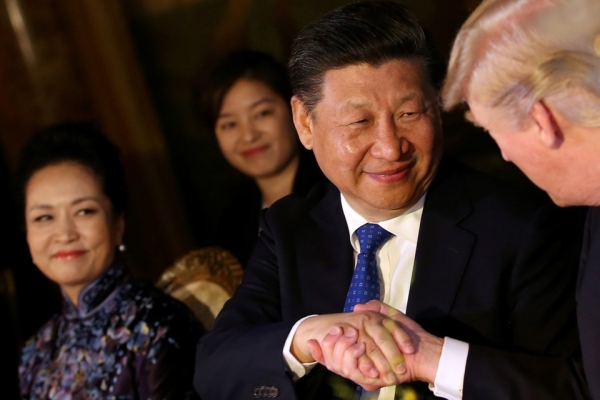As China recently took over operational control of the Hambantota port in Sri Lanka, India is now seeking to strike a similar deal for the Mattala Rajapaksa International Airport near Hambantota. The Economist Intelligence Unit expects that India will increase such investments in Sri Lanka, partly to counter China's growing influence in the region. However, India's investments in South Asian countries will remain much smaller than those by China.
In December 2017 operational control of Hambantota port was formally handed over to a Chinese-led joint venture under a 99-year lease. The joint venture is 70%-owned by China Merchants Port, a state-owned enterprise (SOE), and 30%-owned by a local SOE, the Sri Lanka Ports Authority (SLPA). The joint venture will also own and operate the investment zone around the port.
The Hambantota port and India's concerns
The Hambantota port's location is of strategic importance. It is just 10–12 nautical miles from the vital international sea lanes that carry East-West trade and crucial crude oil supplies to India and China. The port was constructed by two Chinese firms, China Harbour Engineering and Sinohydro, with 85% of the funding provided by the Export-Import Bank of China (the SLPA provided the remaining funds). China has also invested US$1.4bn in the expansion of Sri Lanka's biggest port, in the capital, Colombo.
The Indian government is concerned that China's growing presence in the Indian Ocean means that it could isolate India economically should bilateral tensions intensify. In 2017 the two giants engaged in a high-level stand-off that lasted for more than two months in Doklam, near the China-Bhutan border. India is also concerned that China's involvement in the Gwadar port in Pakistan and the Hambantota port means that they could be used as military bases, which would give China a huge advantage in the event of a military conflict with India.
Rising indebtedness to China will put Sri Lanka in a difficult position
Although Sri Lanka and China have had good bilateral relations since at least 1950, when Sri Lanka recognised China's revolutionary government, and established diplomatic relations in 1957, it was during the two terms of the former president, Mahinda Rajapaksa, that bilateral ties really matured. It was after Mr Rajapaksa's second electoral victory in 2010 that he handed over the task of constructing the Hambantota port to Chinese firms using loans from China. The country also provided funding to build a modern international airport in Mattala, about 20 km north of the port, in addition to several other infrastructure projects.
Although the so-called national-unity government—led by the current president, Maithripala Sirisena, and the prime minister, Ranil Wickremasinghe—was rather cool towards Chinese investments when it first came to power in 2015 because of China's close ties with Mr Rajapaksa, it soon realised that Sri Lanka was heavily in debt to China as a result of infrastructure projects approved by the previous administration. Recognising that it would struggle to meet its loan repayments, the current government negotiated a debt-for-equity swap with China on infrastructure projects started during Mr Rajapaksa's tenure. With many projects now under the operational control of China, Sri Lanka will remain wary of China's increasing stronghold in the country and the wider Indian Ocean region.
India's countering of Chinese influence
The Sri Lankan government is playing a deft diplomacy game in trying to balance relations between China and India. With the Hambantota port now firmly in China's hands for the foreseeable future, India's government is likely to counter Chinese influence in the region by leasing out the Mattala Rajapaksa International Airport, which has proved to be a white elephant with hardly any flights touching down.
According to local media reports, private investors in India are weighing the option of taking a 40-year lease to gain operational control of the airport. Although the Mattala airport is currently very underused, with only three airlines operating from it, it could be used as a hub for flights to and from India. India is the single-largest source of tourists for Sri Lanka, accounting for around 18.2% of total visitor arrivals in 2017, according to data published by the Sri Lanka Tourism Development Authority.
We expect India to increase its engagement in Sri Lanka with a view to boosting its political influence. Even if the Mattala airport is not economically viable, such engagement would serve to expand India's presence on the island as the competition between the two regional powers—India and China—heats up in the coming years. However, China will remain an influential force in Sri Lanka as it steps up investment in other infrastructure projects.
In recognition of India's concerns and as part of its delicate balancing act, the Sri Lankan government has stressed that the Hambantota port will not be permitted to be used for military purposes. Senior Sri Lankan government officials indicated to a global news agency, Reuters, in May 2017 that they were unlikely to grant permission to Chinese submarines to dock in their territory, given India's unease.
We believe that India's fears about Chinese-run ports acting as a strategic gateway for Chinese military influence are overblown, although there is a risk of some additional Chinese spying activity being based at the ports. We nonetheless expect India's policymakers to be particularly wary of China's growing influence in the Indian Ocean region while devising their foreign policy in the coming years. As a part of their response, India's investments in Sri Lanka will increase over the next five years. (Economic Intelligence Unit)










